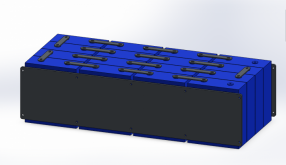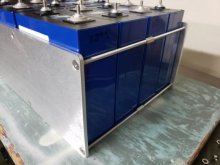I don't know what you torqued the screws that clamp the plates. Be aware too much compression is worse than no compression.
I suggest installing some insulating material between the plates and the cells, and between each cell. If you take your meter and measure the voltage between the QR code and the negative terminal of the cell you will get a voltage reading. The current is very small. However it's possible the PVC wrap of the cells will wear through over time causing the cells aluminum cases to contact each other and this could cause problems over time.
Regarding Lishen cells, it has been pointed out here that what is seen between the aluminum case and the negative terminal is considerable leakage current.. With EVE cells it was confirmed here when measuring between the cells negative and the aluminum case there was very little leakage current...

diysolarforum.com
Also did you install tubing over the threaded rods? And is the coupler between the rods making contact with the cell?








